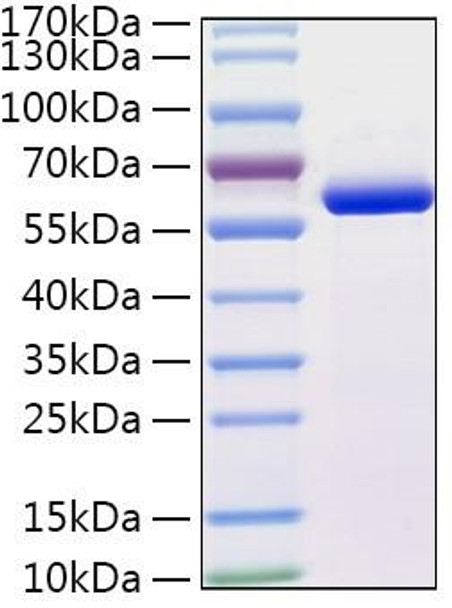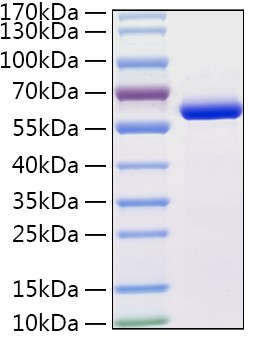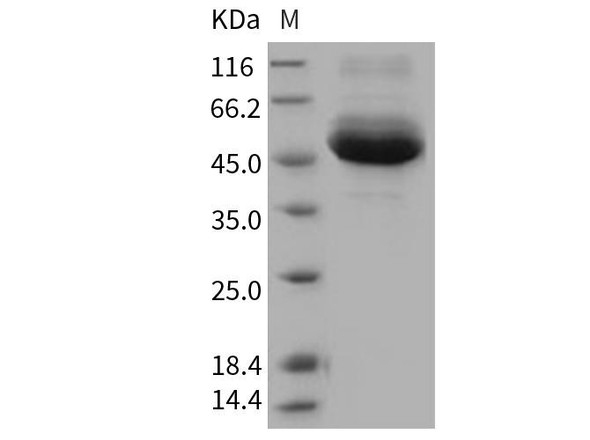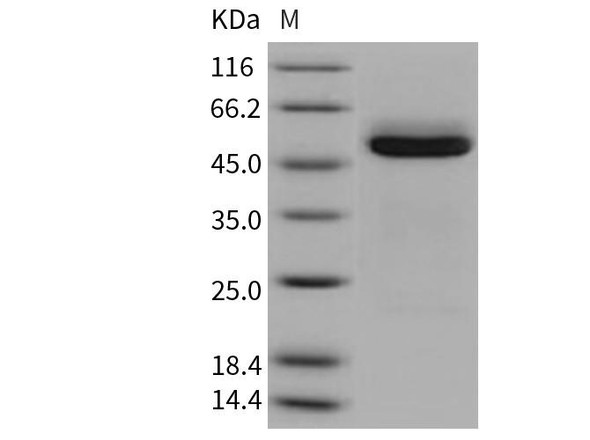Description
Recombinant Human CTSA Protein
The Recombinant Human CTSA Protein is a biologically active recombinant protein that plays a significant role in various cellular processes and signaling pathways in human biology. This protein is widely employed in immunological research, cell biology studies, protein-protein interaction analyses, and therapeutic development, providing researchers with a reliable tool for investigating CTSA function and its implications in health and disease.
This product (SKU: RPCB2000) is produced using HEK293 cells and features a C-His tag for convenient detection and purification. The protein exhibits a calculated molecular weight of 52.2 kDa with an observed molecular weight of 55-60 kDa under denaturing conditions, achieving ≥ 95 % as determined by SDS-PAGE., ensuring exceptional quality and consistency for research applications.
Key Features
| High Purity by Affinity Chromatography | |
| Mammalian & Bacterial Expression Systems | |
| High lot-to-lot consistency via strict QC |
| Product Name: | Recombinant Human CTSA Protein |
| SKU: | RPCB2000 |
| Size: | 50 μg |
| Reactivity: | Human |
| Synonyms: | Lysosomal protective protein, CTSA, Carboxypeptidase C, Carboxypeptidase L, Cathepsin A |
| Tag: | C-His |
| Expression Host: | HEK293 cells |
| Calculated MW: | 52.2 kDa |
| Observed MW: | 55-60 kDa |
| Gene ID: | 5476 |
| Protein Description: | High quality, high purity and low endotoxin recombinant Recombinant Human CTSA Protein (RP03198LQ), tested reactivity in HEK293 cells and has been validated in SDS-PAGE.100% guaranteed. |
| Endotoxin: | < 1 EU/μg of the protein by LAL method. |
| Purity: | ≥ 95 % as determined by SDS-PAGE. |
| Formulation: | Supplied as a 0.2 μm filtered solution of 20 mM PB, 150 mM NaCl, pH 7.4. |
| Storage: | Store at -70℃. This product is stable at ≤ -70℃ for up to 1 year from the date of receipt. For optimal storage, aliquot into smaller quantities after centrifugation and store at recommended temperature. Avoid repeated freeze-thaw cycles. |
Cathepsin A is active in cellular compartments called lysosomes. These compartments contain enzymes that digest and recycle materials when they are no longer needed. Cathepsin A interacts with the enzymes β-galactosidase and neuraminidase 1, which play a role in the breakdown of complexes of sugar molecules (oligosaccharides) attached to certain proteins (glycoproteins) or fats (glycolipids). Cathepsin A forms a complex with these two enzymes and directs their transport within the cell to the lysosomes. Within lysosomes, cathepsin A activates the enzymes and prevents their breakdown.







